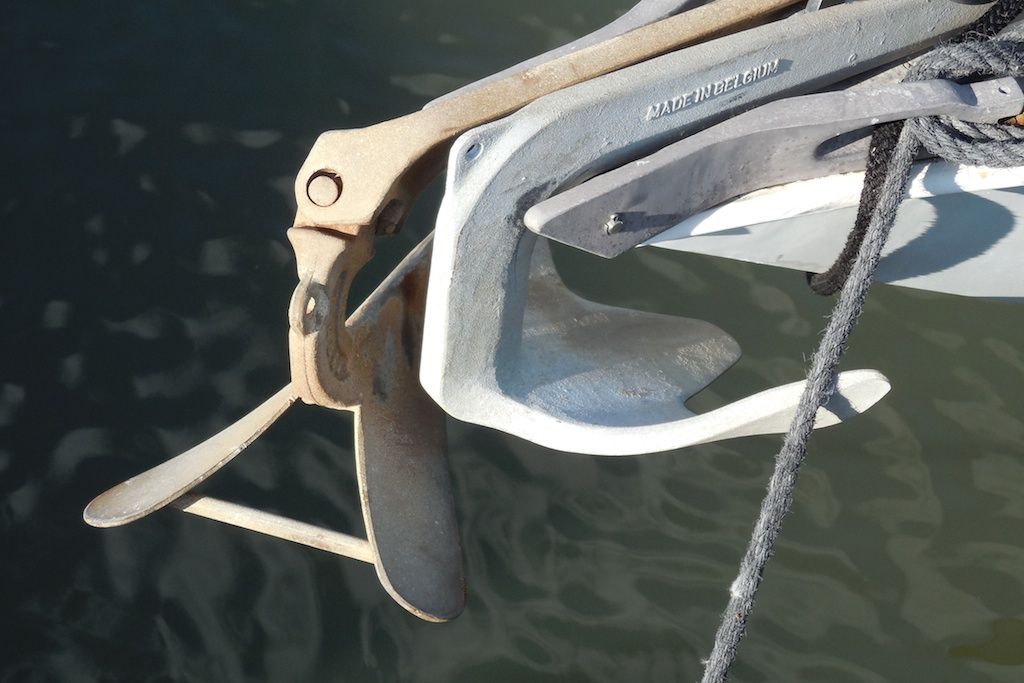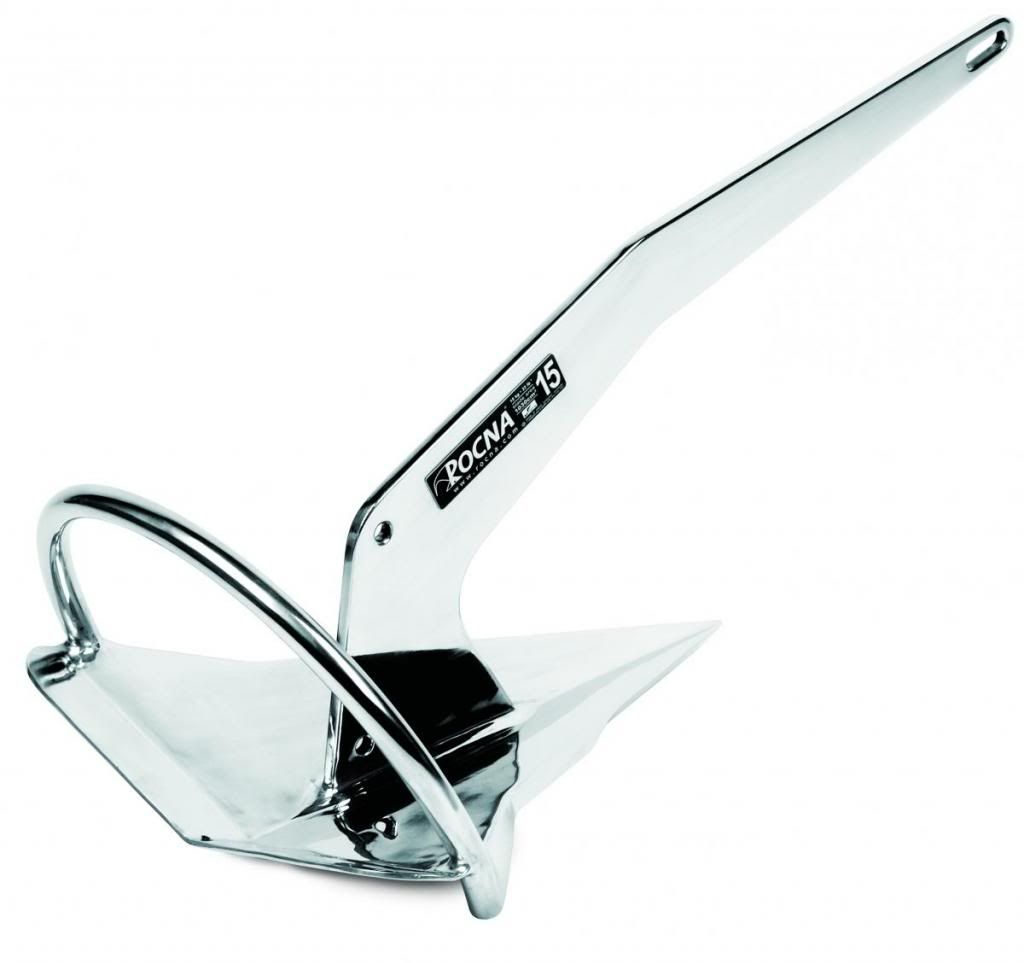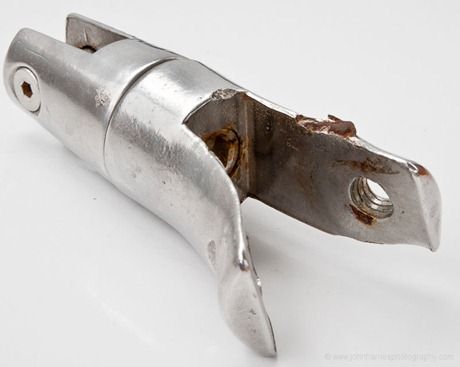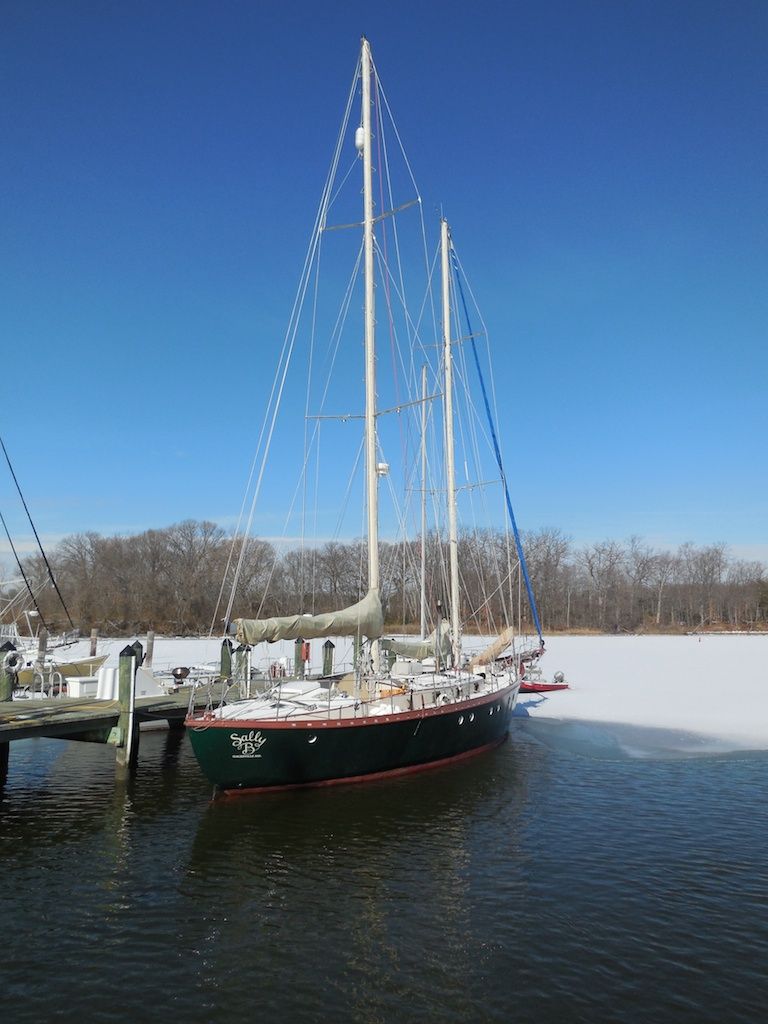Anchor System Planning
--Blog post written by Bob
It's still the middle of winter and the only thing I can do to improve my anchor system is make a plan. I will supplement this blog post with photographs of the new system as it is developed. So, here is my plan…
The Old Anchor System
 |
| The old CQR Plow and the Bruce anchors nest well on the bow. |
The New Anchor System
Since the sailboat show I have also done some research on the Mantus and Rocna anchors--both are galvanized carbon steel anchors. While both of these anchors seem suitable, I decided on the 20-Kg Rocna (weighing 44 pounds) based on a lot of positive feedback on the Cruiser's Forum and I just can't afford the Ultra anchor right now due to the unforeseen need to replace the boat's fuel tank.
 |
| The Rocna anchor design |
The size of chain that best matches the strength of the 5/8-inch diameter rope is 5/16-inch. On the primary anchor (44-lb Rocna), I will use 5/16-inch galvanized chain and a length equal to a little less than the boat's length, maybe 30 feet. (Previously, I used a slightly shorter length of 3/8-inch galvanized chain.). On the secondary anchor (33-lb Bruce) I will use some existing chain that I have (14 feet of 3/8-inch chain) since the this anchor is intended for use in the Chesapeake Bay and ICW where the bottoms are mostly mud and clay.
Anchor Swivels
 |
| A broken anchor swivel can cause catastrophic consequences. (Photo courtesy of Attainable Adventure Cruising) |
Even though I have never experienced any issues with anchor swivels, there is some concern among experienced cruisers on the use of anchor swivels. The concern comes from the possibility of a pin coming loose and the swivel fails as shown in the photograph at right.
The continued use of anchor swivels in my anchor system is still an open issue for me. I have always used LOCTITE Blue thread sealant on the pins and I have had a greater problem in removing them when I want to do than in them loosening. In order to get a failure like the one shown, two threaded members would have to come loose since a screw on the opposite end locks the threaded pin in place. A very casual inspection of the anchor system prior to every use would have caught this, in my opinion.
However, if I can accomplish the function (rolling up over the bow rollers nicely) in another way, I may eliminate the anchor swivels from my anchor system.
An Improved System for Marking the Anchor Roods
Since my minimum anchoring depth is probably about 8 feet of water--at a 7-to-1 scope, 56 feet (rounded up to 60 feet) of anchor rode would be used at my minimum anchoring depth--so, my first marking would be made at 60 feet (two bands). Then, an additional colored band will be made for each additional 30 feet of anchor line length.
 |
| Sally B, a steel hull cutter, sits in her slip in the iced over creek at the end of January. |
 |
| S/V Rainy Days sits in the travel lift while work is being done on installing the new fuel tank. |
Thanks for following our blog!
No comments:
Post a Comment